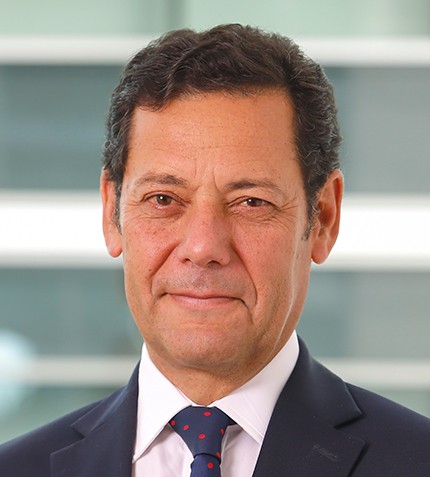
"Chile needs a long-term vision for the mining industry and a continuous design of public policies that promote the adequate extraction of critical minerals for the global energy transition."
Joaquín Villarino
PRESIDENT, CONSEJO MINERO
What were the main highlights of 2022 for the Chilean mining industry?
2022 was marked by two major milestones. The first agenda of the mining sector was the constitutional discussion, leading up to the referendum, which was rejected on September 4th 2022. The second was the new royalty bill. In parallel, I was very involved in discussions around labor, environment, electrification, and other major themes impacting the industry.
Can you take us through the process and impact of the royalty bill that was recently approved?
It has taken us significant energy to modify the royalty bill since it was first presented in the Congress, by trying to change the dramatic increase first proposed into a more reasonable one that wouldn’t sacrifice our global competitiveness.
The original bill gave a total tax burden of more than 80%; the load established in the bill finally approved reaches 44.7%, which, although it is higher than the world average, is within a reasonable range (today, mining has a complete tributary requirement of approximately 38%, including all taxes, royalties and additional).
Mining was always willing to assume a higher tax burden, despite what politicians sometimes claim, however, costs have also increased dramatically due to lower ore grades, more difficulty accessing water, and other factors. Profits are continuously shrinking.
How does infrastructure impact the energy transition?
Political motives are taken into more consideration rather than the technical ones. The temptation for the government is to pass costs onto the industrial sector and mining customers. However, when you add this to labor costs and higher tributary costs, the result is a major burden that inhibits the industry’s development.
Nevertheless, 50% of the electrical energy used by mining comes from renewable sources, and it’s estimated that by 2030, 90% of mining power supply will come from renewable sources.
Chile has a fundamental lack of transmission lines. We have invested in solutions to increase the capacity of renewable energy generation, but we do not have the infrastructure to bring that energy to the final consumer. We are having significant problems obtaining permits for these transmission lines that would enable this change in the energy matrix to materialize.
What is your outlook for the lithium market in Chile?
There is a global consensus that the boom in demand for lithium will not last forever. Like any mineral, lithium is a cyclical resource. Therefore, it is crucial that Chile takes advantage of its lithium reservations to meet the growing demand and become a major world supplier.
What factors have affected productivity in the mining industry?
First, the inefficiency of the permitting process is an issue. Second, the natural process of declining ore grades inevitably reduces productivity. Third, there are labor-related problems, such as a lack of competence and efficiency among the workforce and poor organization within companies. We also need to redesign work models to include more women in every step of the industry. The Consejo Minero is implementing the "Ser Minería" project to attract talent, and we are also working with Fundación Chile and the Consejo de Competencias Mineras and ELEVA to upgrade the skills of the workforce.
The fourth obstacle to productivity is the slowdown in project progress due to external uncertainties. Chile needs a long-term vision for the mining industry and a continuous design of public policies that promote the adequate extraction of critical minerals for the global energy transition.
How has the mining sector dealt with water scarcity in Chile?
The industry has made three main advances in water management: the reuse of water in mining processes, the reduction of water consumption, and the use of alternative sources, such as salt water. Currently, 30% of the water used by industry is salt water, and we expect this percentage will increase up to 50% by 2030. Also, around 76% of the water used in mining processes is recirculated. However, there are broad misconceptions about the environmental impact of desalination plants, so we must provide information about the positive impact that desalination plants have on sustainable development.
What are the main objectives of the Consejo Minero?
The main objective of Consejo Minero is to continue promoting a sustainable and productive industry. Also promoting a serious and evidence-based public debate on mining. Finally, we aim to raise awareness of the social and economic contribution of the mining industry to the country.










